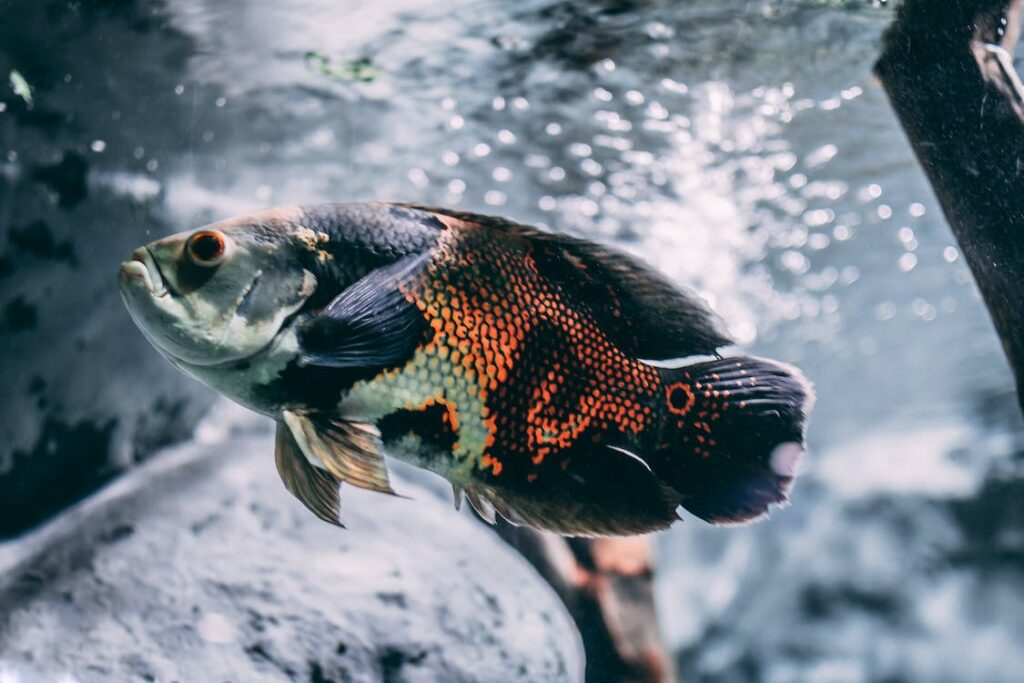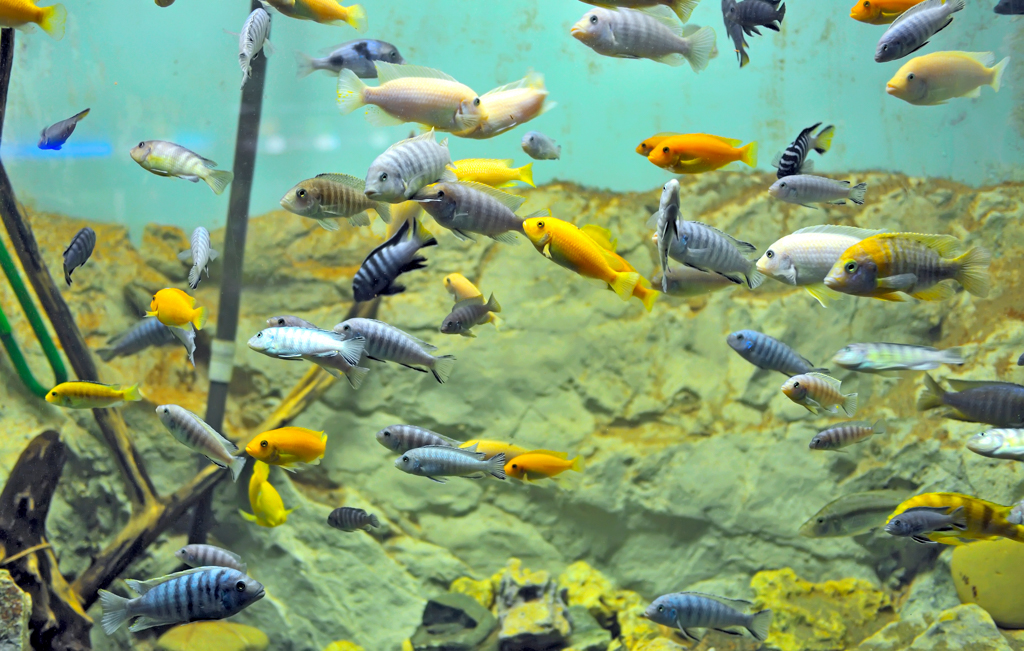Aquarium shrimp have become increasingly popular in recent years as they make great additions to aquariums. These fascinating creatures are both beautiful to look at and provide a lot of benefits to aquariums. There are many different types of aquarium shrimp, each with their own unique characteristics and requirements. In this article, we will explore the world of aquarium shrimp, from their history and biology to their care and maintenance.
History of Aquarium Shrimp
The first aquarium shrimp were likely introduced into the aquarium hobby in the early 20th century. Red cherry shrimp (Neocaridina davidi) were one of the first species of shrimp to be introduced to aquariums, with breeding programs starting in the early 1990s. Other popular species of aquarium shrimp, such as Amano shrimp (Caridina multidentata) and Crystal Red shrimp (Caridina cantonensis), were also introduced around this time.
Aquarium shrimp have since become a staple in the aquarium hobby, with hundreds of different species now available to hobbyists. The popularity of shrimp in the hobby has also led to the development of specialized shrimp tanks, designed to provide optimal conditions for the care and breeding of these fascinating creatures.
Biology of Aquarium Shrimp
Aquarium shrimp belong to the order Decapoda, which also includes crabs and lobsters. They are classified as freshwater or saltwater species, depending on the type of water they inhabit in the wild. Most species of aquarium shrimp are freshwater species, and they are found in a variety of habitats, from fast-moving streams to slow-moving ponds and rivers.
Aquarium shrimp are generally small in size, ranging from 1 to 3 inches in length. They have a hard exoskeleton and possess two pairs of antennae, as well as two pairs of claws. Their eyes are located on stalks and can move independently, giving them excellent vision.
One of the most fascinating aspects of aquarium shrimp is their ability to regenerate limbs. If a shrimp loses a claw or leg, it will regrow the missing appendage within a few molts.
Types of Aquarium Shrimp
There are many different species of aquarium shrimp available to hobbyists, each with its own unique characteristics and requirements. Some of the most popular species include:
- Cherry Shrimp – Also known as Neocaridina heteropoda, these small shrimp are native to Taiwan and are the most common species of shrimp found in the aquarium hobby. They are easy to care for, breed easily, and come in a range of colors, including red, yellow, orange, and blue.
- Amano Shrimp – Also known as Caridina multidentata, these shrimp are native to Japan and are known for their ability to eat algae and keep aquariums clean. They are larger than cherry shrimp and can grow up to 2 inches in length.
- Ghost Shrimp – Also known as Palaemonetes paludosus, these shrimp are native to North America and are transparent, making them a popular choice for hobbyists who enjoy watching their shrimp’s internal organs. They are relatively easy to care for and breed, making them a popular choice for beginners.
- Crystal Red Shrimp – Also known as Caridina cantonensis, these shrimp are native to southern China and are prized for their beautiful, red and white striped coloration. They are more difficult to care for than some other species and require specific water parameters to thrive.
- Bamboo Shrimp – Also known as Atyopsis moluccensis, these shrimp are native to Southeast Asia and are known for their long, filtering appendages. They require a larger aquarium than some other species and prefer slow-moving water.
Care and Feeding
Aquarium shrimp are relatively easy to care for, and they can be kept in small, low-maintenance aquariums. Shrimp require clean, well-aerated water with a pH level between 6.5 and 7.5, and a temperature between 68 and 82 degrees Fahrenheit.
Shrimp are omnivores, and they will eat a variety of foods, including algae, plant matter, and commercial shrimp pellets. It is important to provide a balanced diet that includes both plant-based and animal-based foods to ensure that your shrimp are healthy and thriving.
Shrimp can be kept with other small, peaceful fish, but they may be vulnerable to predation from larger or more aggressive species. It is important to choose tankmates carefully and to provide plenty of hiding places for your shrimp to feel safe and secure.
Breeding
One of the most fascinating aspects of keeping aquarium shrimp is their ability to breed and produce offspring. Most species of shrimp are prolific breeders, and they can produce large numbers of offspring in a relatively short period of time.
Shrimp breed through a process called sexual reproduction, which involves the fertilization of eggs by a male shrimp’s sperm. Female shrimp can store sperm for several months, and they may produce several batches of eggs during that time.
It is important to provide your shrimp with a suitable breeding environment, including plenty of hiding places, plant cover, and suitable water conditions. Shrimp will lay their eggs on plants or other surfaces, and the eggs will hatch into tiny, free-swimming larvae.
The larvae will undergo several molts before reaching maturity, and it is important to provide them with small particles of food, such as microalgae or powdered fish food, during this stage. As they grow, the shrimp will become increasingly independent and will eventually reach maturity and begin breeding themselves.
It is important to note that some species of shrimp, such as crystal red shrimp, are more difficult to breed than others and require specific water parameters and breeding conditions. It is recommended that hobbyists research the specific breeding requirements of their chosen species before attempting to breed them.
Common Issues and Solutions
While aquarium shrimp are relatively easy to care for, there are a few common issues that can arise, including:
- Poor water quality – Shrimp are sensitive to changes in water quality, and poor water conditions can lead to stress, illness, and death. It is important to maintain a clean and well-aerated aquarium with regular water changes to keep your shrimp healthy.
- Predation – Shrimp are vulnerable to predation from larger or more aggressive fish, and it is important to choose tankmates carefully and provide plenty of hiding places for your shrimp to feel safe and secure.
- Disease – Shrimp can be susceptible to bacterial and fungal infections, which can be caused by poor water quality, stress, or other factors. It is important to monitor your shrimp for signs of illness and to treat any issues promptly with appropriate medication.
Conclusion
Aquarium shrimp are a fascinating and colorful addition to any aquarium, providing both visual interest and practical benefits as efficient cleaners and algae eaters. With a wide variety of species available, ranging from easy-to-care-for cherry shrimp to more challenging crystal red shrimp, there is a shrimp species to suit every hobbyist’s preferences and skill level.
By providing a clean and well-maintained aquarium, a balanced diet, and a suitable breeding environment, hobbyists can enjoy the beauty and benefits of aquarium shrimp for years to come.
![]()




